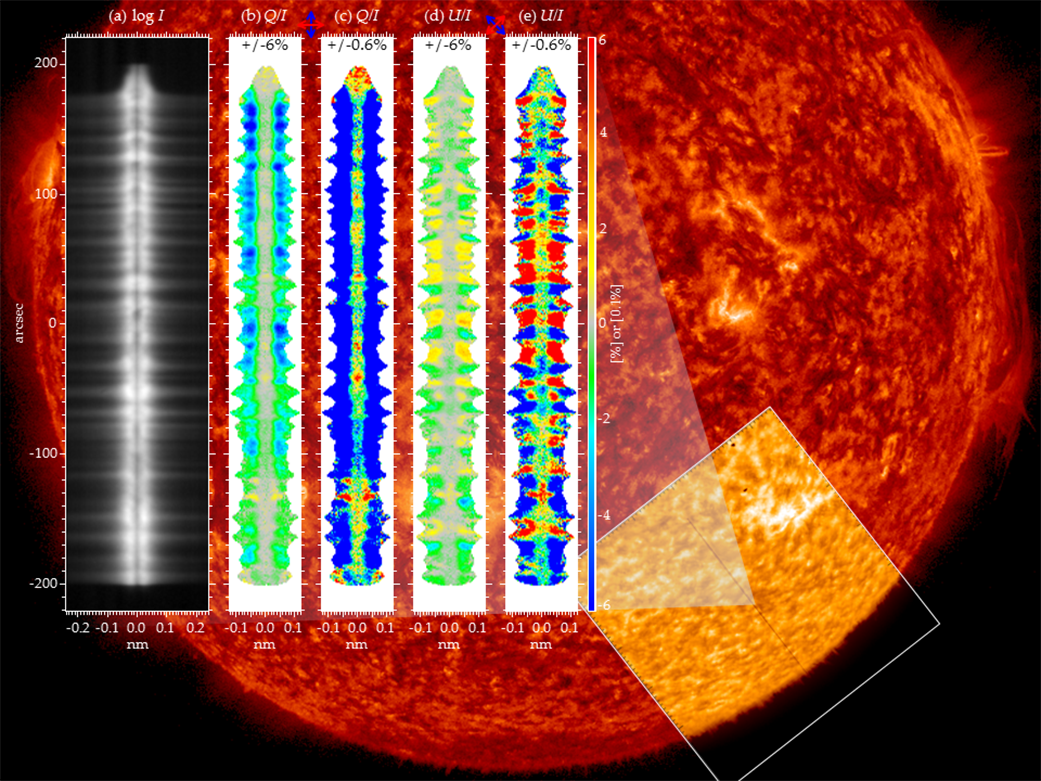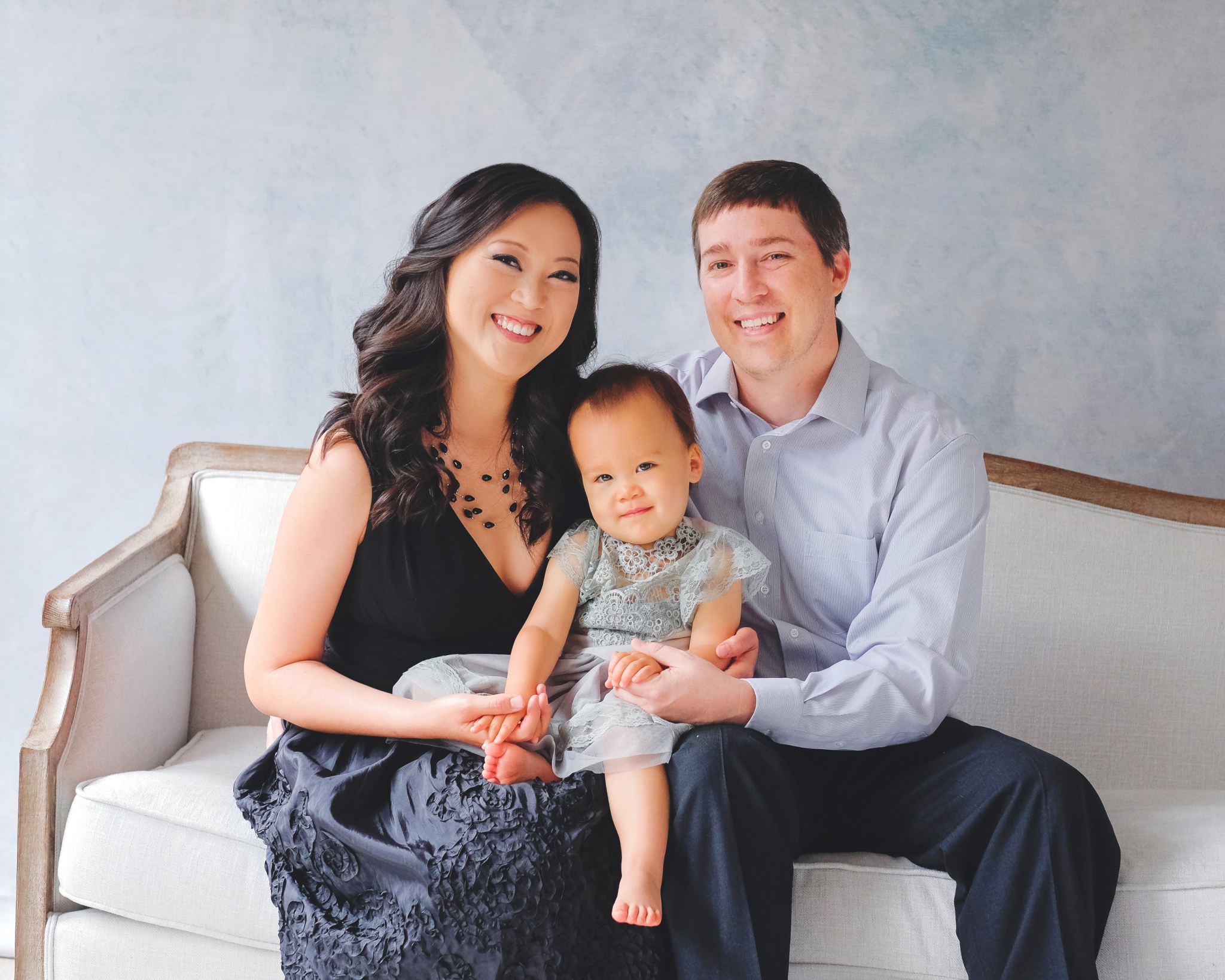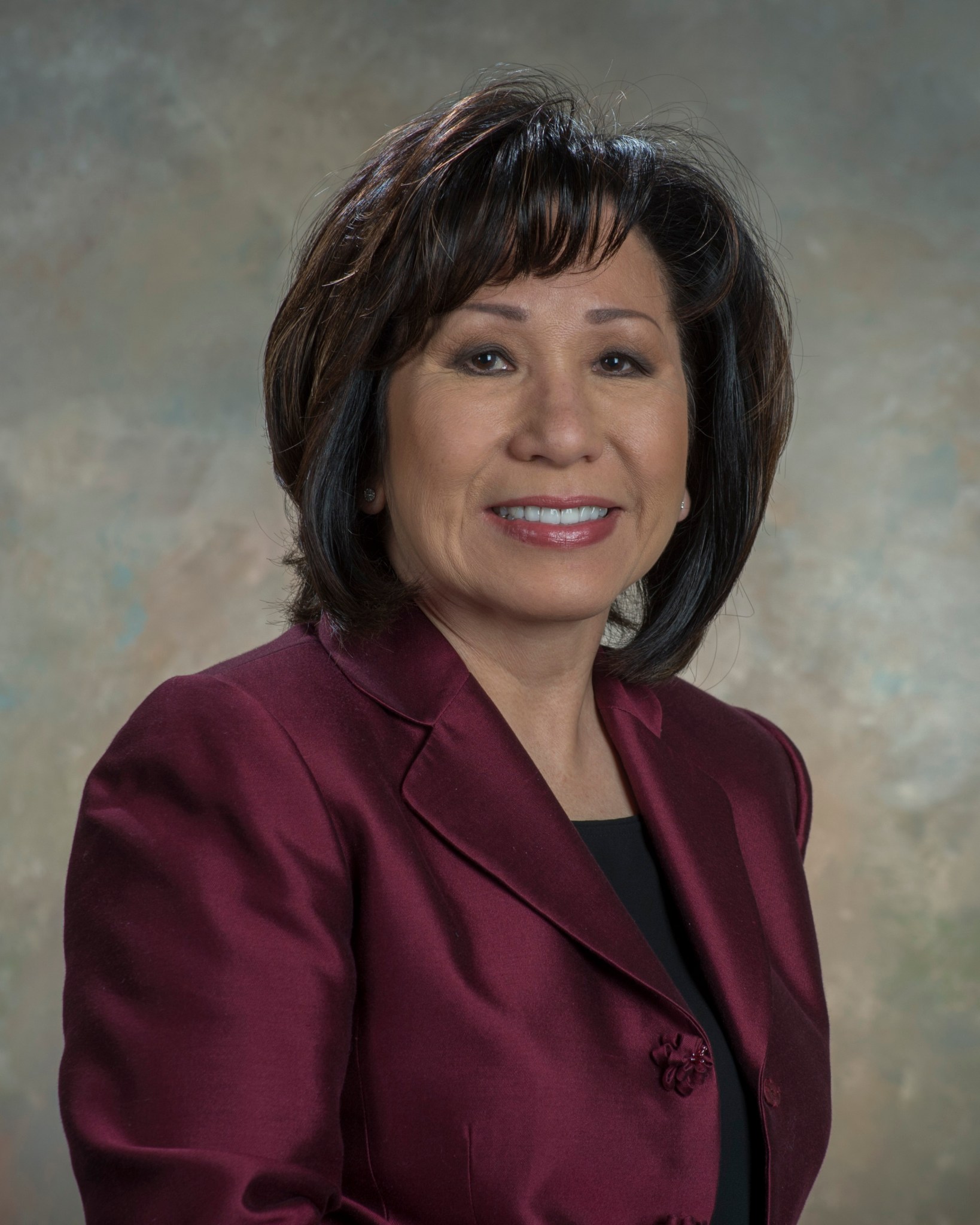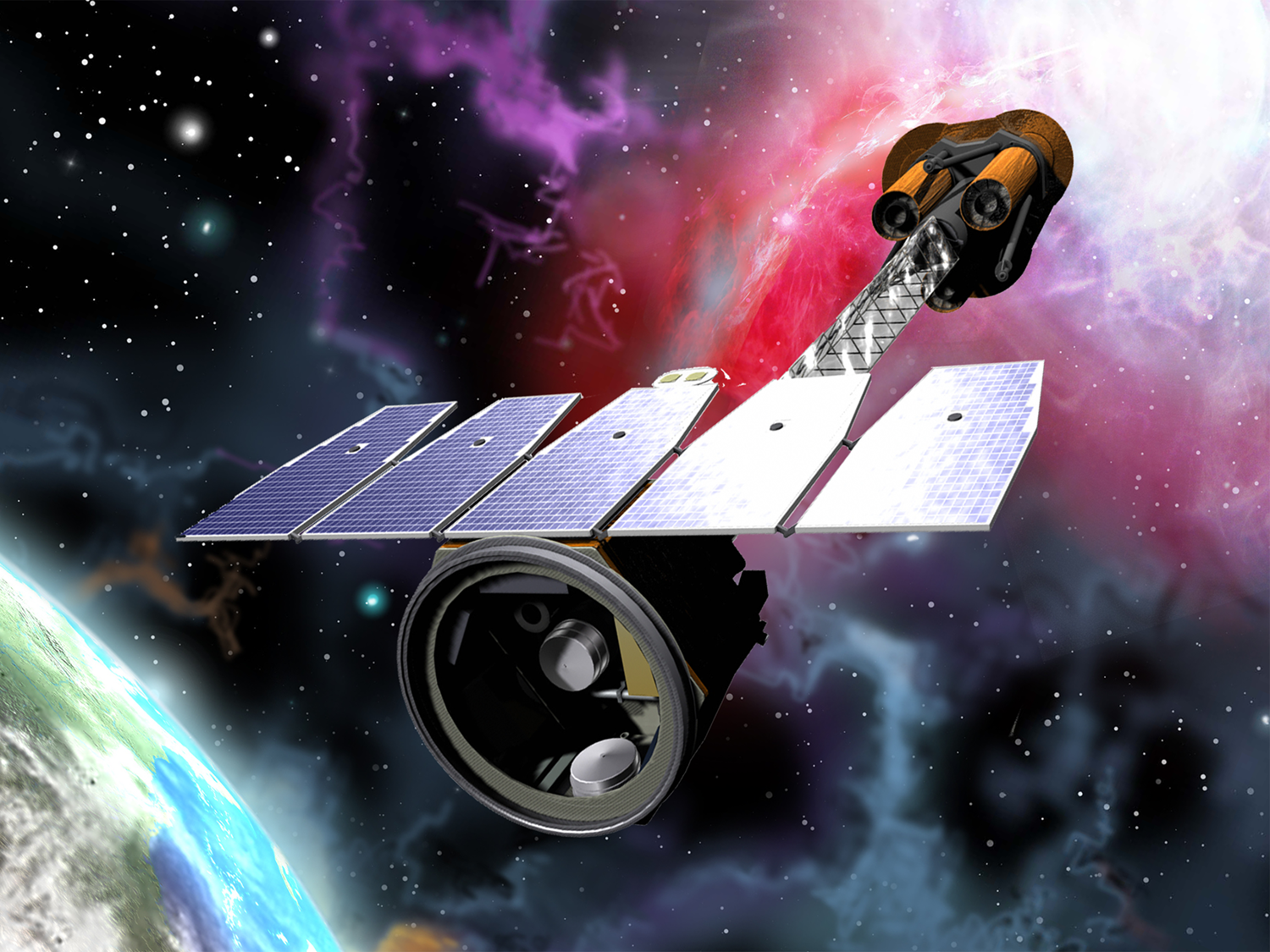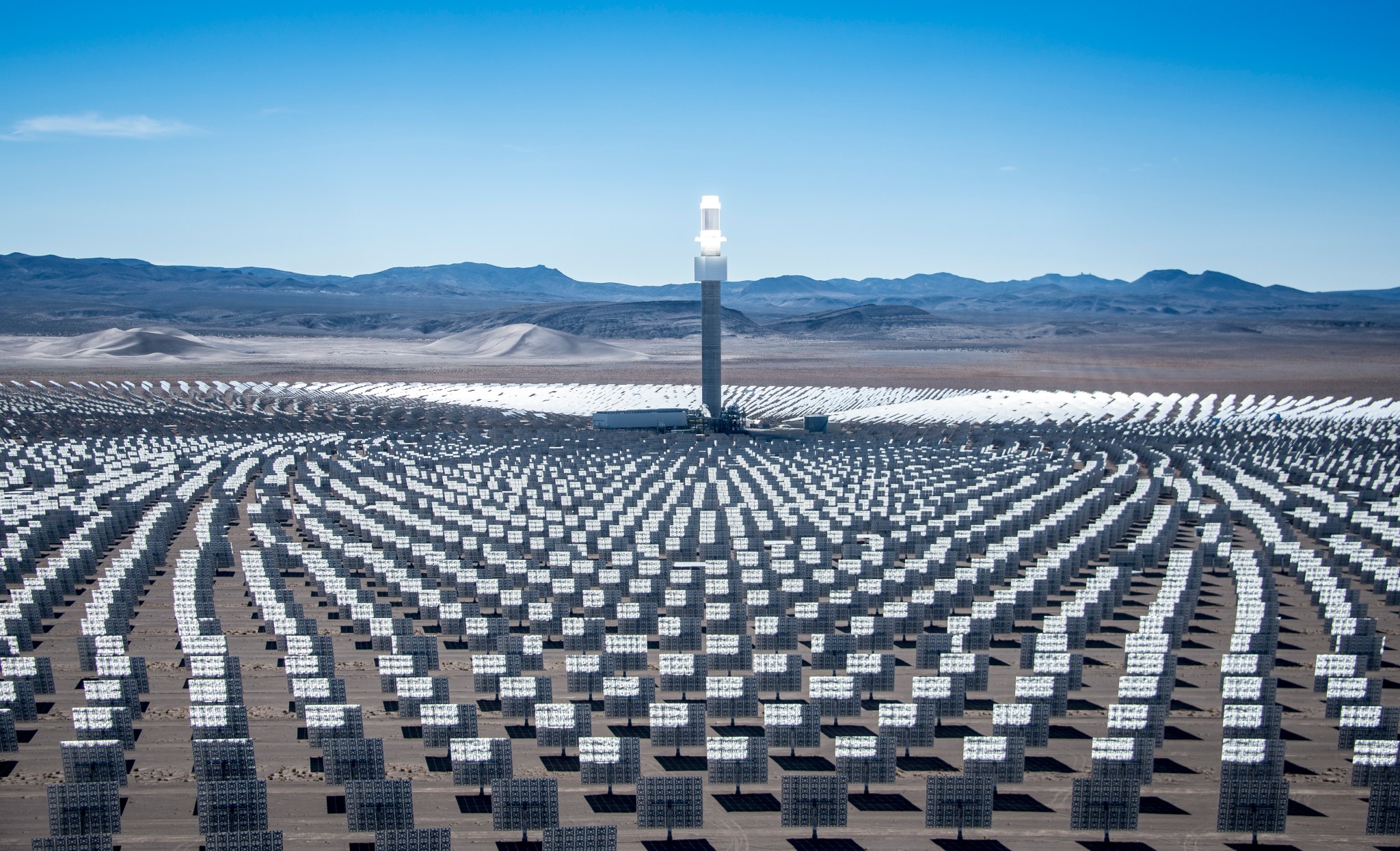In This Week’s Star
- A Whole New Jupiter: First Science Results from NASA’s Juno Mission
- Space Station Program Manager Kirk Shireman Visits Marshall
- CLASP Sounding Rocket Mission Opens New Research Window in Solar Physics
- Marshall Center’s Eleasa Wilson Helps Make Science Happen on the Space Station
- NASA Software Engineer Lien Moore Steers Her Own Destiny, Shapes Humanity’s Future in Space
- Weisskopf Discusses New X-ray Mission June 1 at U.S. Space & Rocket Center
- Marshall Spinoff Lights Up the Night
- This Week in NASA History: Final Shuttle-Mir Docking Mission Launches — June 2, 1998
A Whole New Jupiter: First Science Results from NASA’s Juno Mission
Early science results from NASA’s Juno mission to Jupiter portray the largest planet in our solar system as a complex, gigantic, turbulent world, with Earth-sized polar cyclones, plunging storm systems that travel deep into the heart of the gas giant, and a mammoth, lumpy magnetic field that may indicate it was generated closer to the planet’s surface than previously thought.
“We are excited to share these early discoveries, which help us better understand what makes Jupiter so fascinating,” said Diane Brown, Juno program executive at NASA Headquarters. “It was a long trip to get to Jupiter, but these first results already demonstrate it was well worth the journey.”
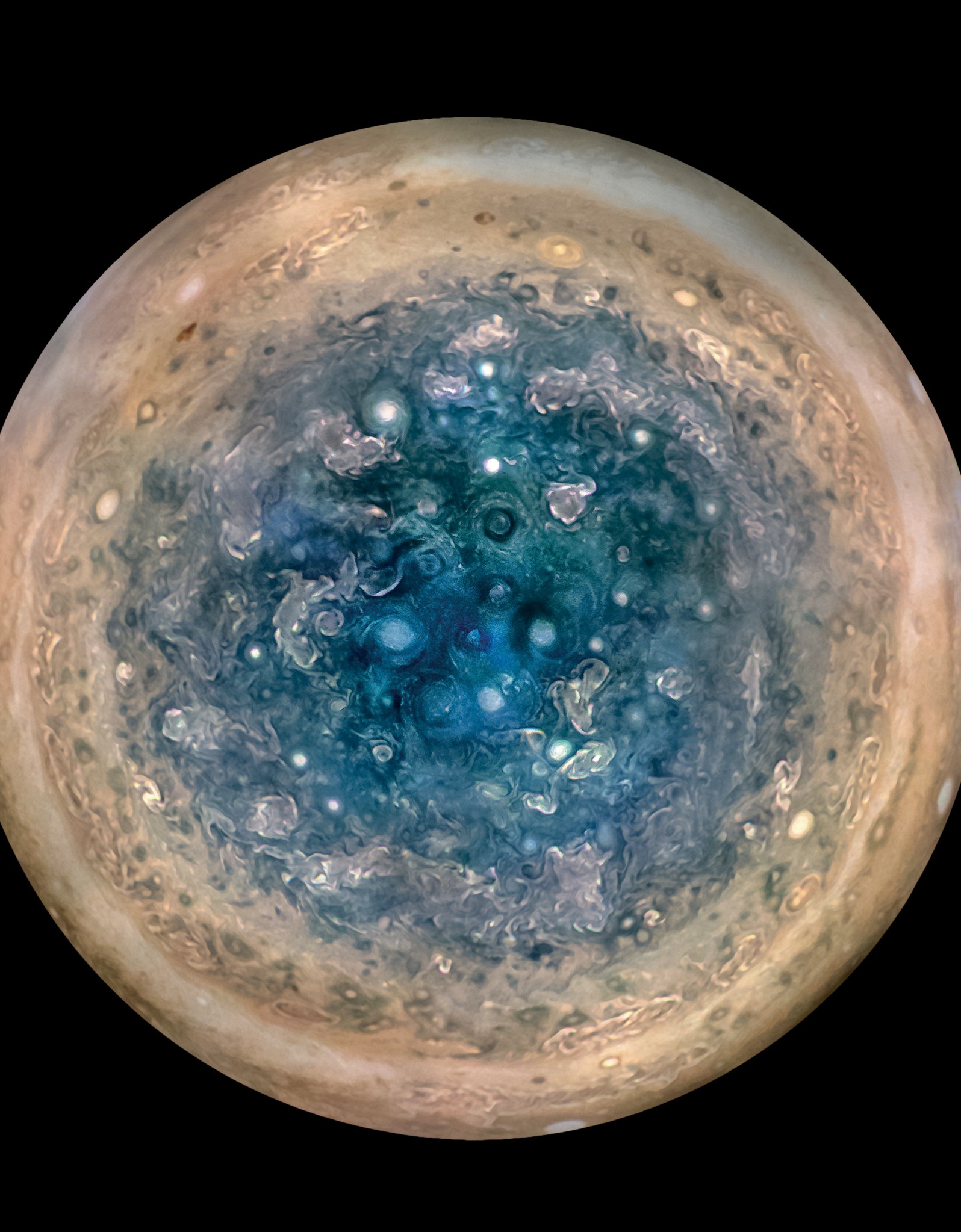
Juno launched on Aug. 5, 2011, entering Jupiter’s orbit on July 4, 2016. The findings from the first data-collection pass, which flew within about 2,600 miles of Jupiter’s swirling cloud tops on Aug. 27, 2016, are being published this week in two papers in the journal Science, as well as 44 papers in Geophysical Research Letters.
“We knew, going in, that Jupiter would throw us some curves,” said Scott Bolton, Juno principal investigator from the Southwest Research Institute in San Antonio. “But now that we are here we are finding that Jupiter can throw the heat, as well as knuckleballs and sliders. There is so much going on here that we didn’t expect that we have had to take a step back and begin to rethink of this as a whole new Jupiter.”
Among the findings that challenge assumptions are those provided by Juno’s imager, JunoCam. The images show both of Jupiter’s poles are covered in Earth-sized swirling storms that are densely clustered and rubbing together.
Another surprise comes from Juno’s Microwave Radiometer, which samples the thermal microwave radiation from Jupiter’s atmosphere, from the top of the ammonia clouds to deep within its atmosphere. The MWR data indicates that Jupiter’s iconic belts and zones are mysterious, with the belt near the equator penetrating all the way down, while the belts and zones at other latitudes seem to evolve to other structures. The data suggest the ammonia is quite variable and continues to increase as far down as we can see with MWR, which is a few hundred miles.
Prior to the Juno mission, it was known that Jupiter had the most intense magnetic field in the solar system. Measurements of the massive planet’s magnetosphere, from Juno’s magnetometer investigation, indicate that Jupiter’s magnetic field is even stronger than models expected, and more irregular in shape. MAG data indicate the magnetic field greatly exceeded expectations at 7.766 Gauss, about 10-times stronger than the strongest magnetic field found on Earth.
Juno also is designed to study the polar magnetosphere and the origin of Jupiter’s powerful auroras — its northern and southern lights. These auroral emissions are caused by particles that pick up energy, slamming into atmospheric molecules. Juno’s initial observations indicate that the process seems to work differently at Jupiter than at Earth.
Juno is in a polar orbit around Jupiter, and the majority of each orbit is spent well away from the gas giant. But, once every 53 days, its trajectory approaches Jupiter from above its north pole, where it begins a two-hour transit (from pole to pole) flying north to south with its eight science instruments collecting data and its JunoCam public outreach camera snapping pictures. The download of six megabytes of data collected during the transit can take 1.5 days.
“Every 53 days, we go screaming by Jupiter, get doused by a fire hose of Jovian science, and there is always something new,” said Bolton. “On our next flyby on July 11, we will fly directly over one of the most iconic features in the entire solar system — one that every school kid knows — Jupiter’s Great Red Spot. If anybody is going to get to the bottom of what is going on below those mammoth swirling crimson cloud tops, it’s Juno and her cloud-piercing science instruments.”
NASA’s Jet Propulsion Laboratory manages the Juno mission for NASA. The principal investigator is Scott Bolton of the Southwest Research Institute in San Antonio. The Juno mission is part of the New Frontiers Program managed by NASA’s Marshall Space Flight Center for the agency’s Science Mission Directorate. Lockheed Martin Space Systems, in Denver, built the spacecraft.
Space Station Program Manager Kirk Shireman Visits Marshall
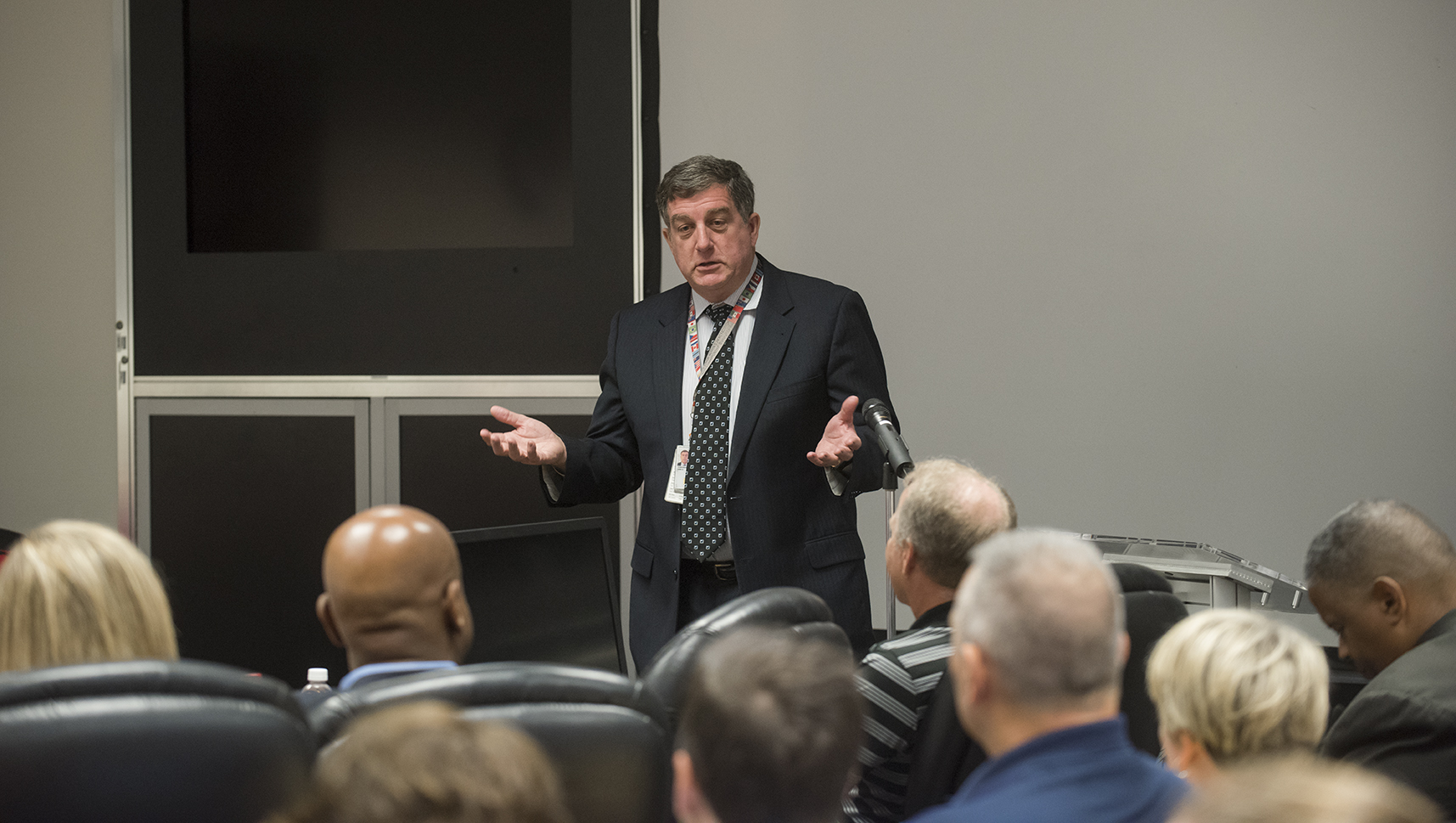
Kirk Shireman, program manager for the International Space Station, conducts an all-hands meeting May 24 with NASA Marshall Space Flight Center team members who manage and support the science investigations on the orbiting laboratory. “Marshall is building the Space Launch System while still managing critical science on the station,” Shireman said. “Thanks to the expertise and skill in this room, we are increasing the amount of science we are able to perform each week while building on our international partnerships to grow space exploration.” Shireman also addressed the future of the station, including the possibility of extending its lifespan as “a stepping-stone for the Journey to Mars.” (NASA/MSFC/Charles Beason)
CLASP Sounding Rocket Mission Opens New Research Window in Solar Physics
A team of NASA scientists and international partners used data from the high-precision science instrument CLASP — the Chromospheric Lyman-Alpha Spectro-Polarimeter — to provide the first-ever polarization measurements of ultraviolet light emitted from the sun’s outer atmosphere. Previous polarization measurements were restricted to visible light emitted from the sun’s surface.
By looking at the sun with this new technique, heliophysicists — who study how our dynamic sun drives change in the physics of space itself — now can answer fundamental questions about the sun’s chromosphere, an important layer of our turbulent star’s outer atmosphere.
“We can’t directly image everything that’s going on in the solar atmosphere, but studying the polarization of ultraviolet light reveals the physics of the magnetic fields in the upper chromosphere and the transition region to better understand activity in this enigmatic region,” said Amy Winebarger, CLASP’s principal investigator at NASA’s Marshall Space Flight Center.
Her colleague David McKenzie, a fellow NASA heliophysicist, concurred. “Understanding the role of the magnetic field is vital to predicting powerful solar activity and protecting space and Earth technology from potential damage,” he said.
Papers describing the findings appear in the April 2017 issue of The Astrophysical Journal Letters and the May 2017 issue of The Astrophysical Journal.
The CLASP instrument measures ultraviolet light from the sun which cannot penetrate Earth’s atmosphere. The instrument flew via sounding rocket above Earth’s atmosphere in September 2015. Thanks to its success, a second international team — with McKenzie as principal investigator — will launch CLASP 2 via sounding rocket in 2019, studying the processes by which energy emerges through the sun’s corona and pushes outward as solar wind.
Winebarger called the first mission’s initial findings “unprecedented.” They helped lead to the CLASP team’s May award of the National Astronomical Observatory of Japan Director General Prize, citing the mission’s “significant scientific results” and overall “great success.”
Goals of the mission
The mission measured ultraviolet light — specifically, the Lyman-alpha emission line — produced by hydrogen atoms present in the chromosphere. Winebarger explained that the polarization of this light, or its restriction to one direction, can be correlated to the intensity and direction of the magnetic field. “The CLASP observations have unlocked a new method of determining the magnetic field strength in this region — by measuring the polarization of this specific spectral line which is extremely sensitive to magnetic fields in the chromosphere,” she said.
Understanding the properties of the sun’s magnetic field is of crucial value to researchers. McKenzie noted that the magnetic field plays a vital role in dictating the structure of the sun’s atmosphere, and acts as a conduit for mass and energy to flow into the solar corona and solar wind. Solar material can also reach Earth from powerful eruptions on the sun, such as solar flares or coronal mass ejections, which at their worst can disrupt satellites and interfere with radio communications. Knowledge of how the sun releases these bursts of energy is critical to our understanding of the sun’s impact on critical technological systems.
Launched via Black Brant IX suborbital sounding rocket from White Sands Missile Range in New Mexico, CLASP had a mere five-minute window in which to study the sun, 93 million miles distant, and return imagery with minimal noise — or the disruption of image pixels — and a level of precision of less than 0.1 percent. It even revealed a series of unexpected supersonic events, possibly some type of previously unseen magnetohydrodynamic wave, occurring all over the sun’s surface.
CLASP 2 expands on the first mission’s research, this time studying Magnesium II h and k emission lines. Routinely observed for chromospheric investigations, these lines operate on a longer wavelength than do the Lyman-alpha lines. “Studying those additional wavelengths will add a three-dimensional perspective to the study, revealing not just the component of the magnetic field in the plane of the sky, but also the part directed toward or away from us — the complete 3-D magnetic vector,” McKenzie said. “We’re picking up a whole new dimension with the new mission.”
Read the full NASA feature about newly published CLASP findings and the plans for CLASP 2 here.
Marshall Center’s Eleasa Wilson Helps Make Science Happen on the Space Station
By Bill Hubscher
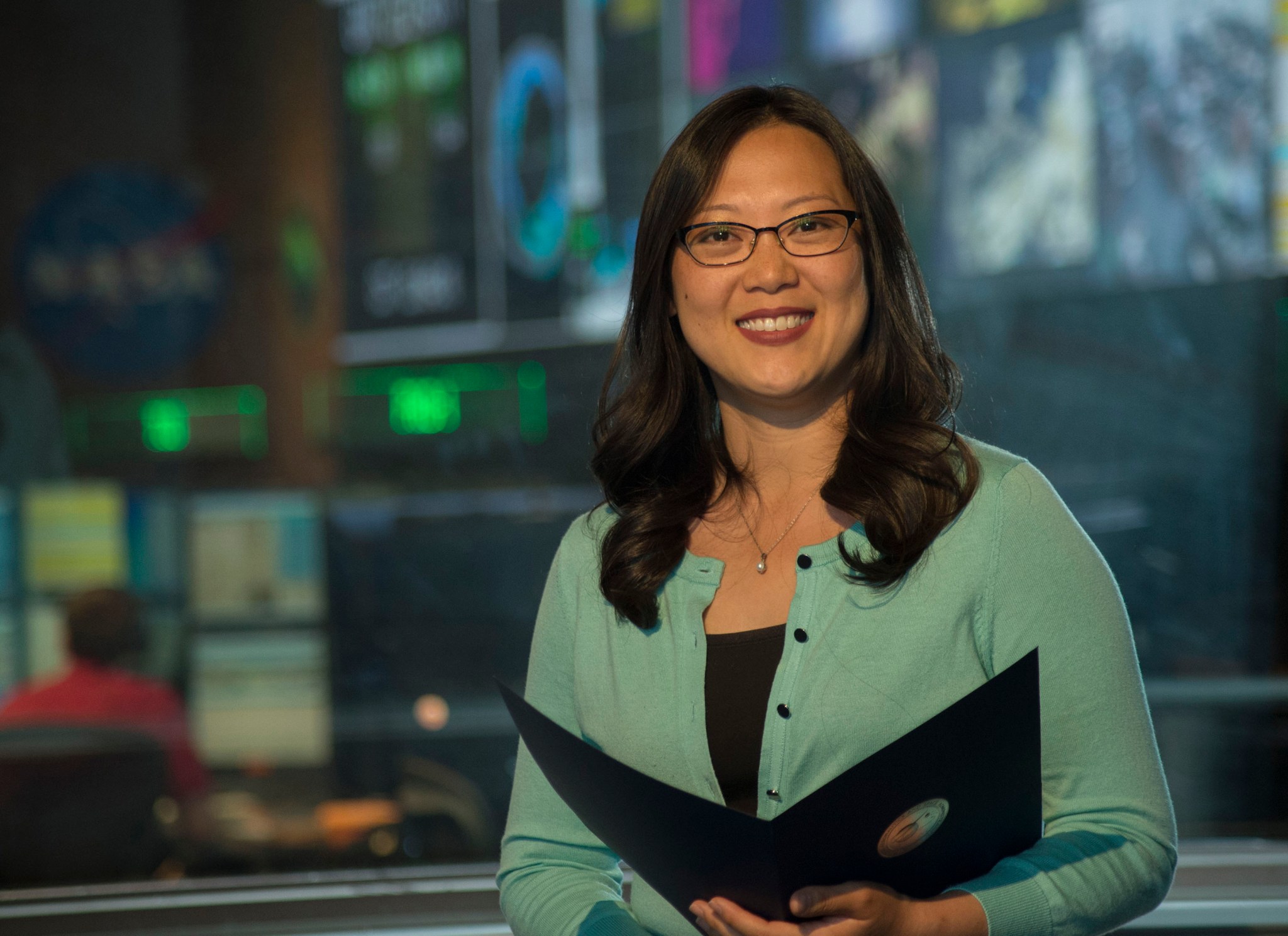
Eleasa Wilson always had a fondness for science. She has parlayed that interest into a career working with the International Space Station at NASA’s Marshall Space Flight Center, where she’s a payload activities requirements coordinator, working with scientists and payload developers around the world to plan their science investigations in orbit.
Raised in the small, southeast Alabama town of Opelika, she was taught as a child to pursue the American dream.
“My parents came here separately from Korea, each in their early 20s, looking for a better life,” Wilson said. “When they met and started a family, the dream of what this country was to them was then passed on to me and my three sisters. They also ingrained the image of this country as a ‘melting pot,’ encouraging us to learn about other people and appreciate them as Americans — just like us.”
Wilson attended Vanderbilt University in Nashville, Tennessee, on a scholarship, and graduated with a biomedical engineering degree. She went on to graduate school at Northwestern University in Evanston, Illinois, and learned something very important during her time there — she didn’t want to work in a laboratory. While searching desperately for the right job in October 2006 — two months before graduation — she stumbled on the job announcement that would change her life.
“NASA needed biomedical engineers to support the crew on the space station,” Wilson said. “NASA wasn’t even on my radar because I didn’t think I had ‘the right stuff’ to work there. But after I dug a little deeper about what a flight controller does, I was hooked.”
The position involved making sure the space station crew members followed the procedures to keep themselves healthy while living and working off Earth for six months at a time. Wilson would be working with NASA flight surgeons to make sure astronauts on the space station were doing everything feasible to maintain their health.
In January 2007, weeks after graduating with a master’s degree in biotechnology, she started training for official certification as a biomedical engineer flight controller in Mission Control at NASA’s Johnson Space Center. It was a bit of a culture shock, entering an environment completely alien to her.
“For the first couple of years, it was like drinking from a fire hose,” Wilson said. “I was learning a new language and new culture at an uncomfortable pace, but I was eventually pretty good at working on console in Mission Control supporting the crew and helping keep them healthy.”
During her first five years with NASA, Wilson discovered she enjoyed sharing her knowledge with newly hired biomedical engineers, helping train them on the mission control console.
She began scripting simulations for trainees and giving them feedback on how to improve. To officially be a trainer, she needed certification. This became another turning point, not only because she was learning new job skills, but because a certain Environmental Control and Life Support System flight controller caught her eye.
She met her future husband, J.P. Wilson, in the training certification classes and soon learned he had graduated from Auburn University in Alabama, just a few short miles from her hometown of Opelika.
“I really felt like we were meant for each other,” Wilson said. “We started dating, and when I wanted to move to be closer to my parents yet continue working for NASA, we applied together to work at Marshall.”
Eleasa was soon hired as a payload activities requirements coordinator, developing goals and mapping the sequence of events to make science investigations successful, including planning the various tasks the astronauts perform on the station. J.P. was hired as a payload communicator — talking with the astronauts to help guide them through investigations. They both started their new positions in Huntsville on Jan. 6, 2014.
“I’m in awe of what we are doing here,” Wilson said. “NASA’s mission to explore has driven so many advancements. We have made discoveries in materials science, biology and technology — and we continue to unlock answers to many scientific mysteries.”
To learn more about Wilson, including how she and J.P. are passing on their appreciation of variety to their 2-year-old daughter, read the full article here.
Hubscher, an ASRC Federal/Analytical Services employee and the Marshall Star editor, supports the Office of Strategic Analysis & Communications.
NASA Software Engineer Lien Moore Steers Her Own Destiny, Shapes Humanity’s Future in Space
By Rick Smith

Once a Vietnam War refugee, now a respected NASA software engineer, Lien Moore steadfastly believes in the importance of owning her choices, steering her own destiny.
“I’ve lived through huge changes,” said Moore, now a technical assistant in the Space Systems Department’s Flight Software Development Branch at NASA’s Marshall Space Flight Center. She provides technical guidance and expertise to flight software development efforts for a variety of NASA science and technology projects as well as the Space Launch System, the world’s most powerful rocket. “I learned very early the value of being adaptable when facing changes.”
For Moore, that lesson began in 1968, when North Vietnam launched the deadly Tet Offensive — so named because it started during Tet, the Vietnamese New Year — against South Vietnamese and U.S. troops. The sound of fireworks, so common in her home city of Saigon during Tet, was punctuated that year by gunfire, and the ensuing fear and uncertainty would continue for more than six years.
In April 1975, the fact that Moore’s father worked for the American embassy in Saigon had put the family in grave danger. Like so many other refugees, they were forced to take part in “Operation Frequent Wind,” still the single largest helicopter evacuation ever undertaken.
As the family was ushered onto the helicopters, soldiers worried about weight restrictions tried to split up the 11-member family. Moore’s parents chose to throw away most of their belongings to keep everyone together. “My mother had one purse full of jewelry and one full of photos,” she said. She chose the pictures. “As we flew away, the helicopter behind us was shot down,” Moore recalled. “We were very lucky they didn’t split us up.”
The family eventually found themselves in Rockledge, Florida, where a sponsor family found them a home and helped Moore’s father find work. Moore went into “survival mode,” she said, learning the new culture and language. Within a year, she had a comfortable command of English. “But I still count in Vietnamese,” she laughed. “It’s faster.”
Pursuing a passion for space exploration
Their proximity to NASA’s Kennedy Space Center wasn’t lost on Moore. She remembered Neil Armstrong walking on the moon in July 1969 — an inspiring moment in a season of conflict. “I always dreamed of being part of America’s space program,” she said.
Setting her sights on a NASA career, she pursued American citizenship. She graduated from Rollins College in Winter Park, Florida, in 1987 with bachelor’s degrees in mathematics and computer science, and went to work that year for McDonnell-Douglas, the aerospace company that later would merge with Boeing. That led to a progression of software engineering positions at various aerospace companies and defense contractors.
For 20 years, she pursued her dream — “to work on future vehicles to take us to space.” The chance came in 2007, when she was hired at Kennedy to lead development of command and control software enabling ground personnel to control flight vehicles remotely.
She was promoted to group lead for Kennedy’s models and simulations group in 2011, then lead system integration engineer for models and simulations in 2014. During this period, she also completed NASA’s Mid-Level Leader Program for engineering, science and administrative professionals, and revived Kennedy’s Asia Pacific American Connection group, an organization serving persons of Asian and Pacific Islander heritage.
Having completed her six-month detail supporting Marshall’s Flight Software Development Branch, it’s now Moore’s goal to lead new technology development endeavors and streamline software development processes, “to help keep us lean and competitive.”
And though most of her family has remained in Florida ever since their flight from Vietnam, Moore and her husband Bob — a systems engineer for Special Aerospace Services of Boulder, Colorado — jumped at the chance to make the move permanent when Marshall offered her a permanent job transfer. “I fell in love with the Marshall community,” she said. “It feels like home. I can’t wait to see where this path takes me.”
Smith, an ASRC Federal/Analytical Services employee, supports Marshall’s Office of Strategic Analysis & Communications.
Weisskopf Discusses New X-ray Mission June 1 at U.S. Space & Rocket Center
NASA’s Marshall Space Flight Center team members are invited to attend a public talk by Martin C. Weisskopf, principal investigator for NASA’s Imaging X-ray Polarimetry Explorer mission, about the new mission to study cosmic X-ray mysteries at 5:30 p.m., June 1 at the U.S. Space & Rocket Center in Huntsville.
Weisskopf will discuss the recently announced IXPE mission and what scientists hope to learn in the “Pass the Torch” series held in the rocket center’s Davidson Center for Exploration’s National Geographic Theater.
The IXPE mission will measure the polarization of X-rays emitted from the superheated gases surrounding black holes, neutron stars, pulsars and other astronomical sources. X-ray polarization measurements will help astronomers answer fundamental questions about these turbulent environments, where gravitational, electric and magnetic fields are at their limits.
The talk, titled “IXPE: The Mission and Its Science,” is sponsored by the rocket center and the Huntsville chapter of the L5 Society. Admission is free and the program will last one hour.
Marshall Spinoff Lights Up the Night
By Will Bryan
There is nothing like the night launch of a rocket, especially of NASA’s now-retired space shuttle. When the shuttle’s three powerful main engines and twin solid rocket boosters roared to life, the dark night sky seemed to turn into the bright morning dawn. The same know-how that developed, built and maintained the shuttle’s RS-25 engines — currently being upgraded and tested for use on NASA’s new heavy lift rocket, the Space Launch System — helped turn on another set of lights and power a completely different type of system.
Aerojet Rocketdyne of Sacramento, California, developed the RS-25 engine under contract with NASA’s Marshall Space Flight Center in the 1970s and used the experiences and expertise to help develop solar power tower technology two decades later.
Solar power towers use concentrated sunlight to drive electricity-producing steam turbines. The sunlight is transferred to the steam turbines using molten salt. The salt is heated in and transported through tubes similar to those surrounding RS-25 rocket engine nozzles. Welding knowledge, expertise in handling extreme temperatures and heat change and working with cyclic temperature gradients over long durations — experiences gained from the development of the RS-25 engine for Marshall — play a critical role in the technology.
SolarReserve, based in Santa Monica, California, licensed Aerojet Rocketdyne’s solar power technology to develop large-scale solar power projects, including the Crescent Dunes Solar Energy Plant near Tonopah, Nevada. Crescent Dunes began power production in late 2015. Using energy from the sun and heated salt, the clean, renewable energy facility is capable of producing electricity for 75,000 homes during peak hours — enough for almost every home in Huntsville.
Situated in the middle of the Nevada desert, halfway between Reno and Las Vegas, the solar power tower stands 640 feet above the sand and distant mountains. Surrounding this 64-story-tall structure are over 10,000 heliostats — essentially rotating mirrors — that reflect sunlight to a receiver at the top of the tower that collects the focused energy and heats the molten salt inside to temperatures over 1,000 degrees Fahrenheit.
The heated salt moves into a thermally insulated holding tank adjacent to the tower where it will remain — retaining its heat — until needed. This allows the plant to produce electricity at night and on overcast days. When electricity is needed, the molten salt moves through a steam generation system where its heat is released, converting water to high-temperature, high-pressure steam. The steam, in turn, drives conventional turbines producing electricity. Once the salt cools, it cycles to a low-temperature storage facility where it remains until cycled back up the tower for use. Similarly, the water vapor is also cooled and reused.
In addition to providing clean, renewable energy, the plant also brings jobs and money to the 2,500-resident-town of Tonopah, Nevada, which was once the site of a silver prospecting boom. Over 4,000 jobs were created, and products and services from over 26 states were purchased.
When trying to mine the power of the sun, it never hurts to have a few rocket scientists around. Using the expertise of the teams that developed one of the most efficient rocket engines in history, SolarReserve and their Crescent Dunes Solar Energy Plant produce clean and renewable energy for the residents of Nevada.
Do you have a technology that could help light a new path? If so, submit a New Technology Report. As Terry Taylor, manager of Marshall’s Technology Transfer Office explains, “The agency holds more than 1,400 patents and makes them available to industry through its patent licensing program. These inventions generate revenue, create jobs, save lives and show a clear return on investment for the nation’s space program.”
Bryan, an ASRC Federal/Analytical Services employee, supports the Office of Strategic Analysis & Communications.
This Week in NASA History: Final Shuttle-Mir Docking Mission Launches — June 2, 1998
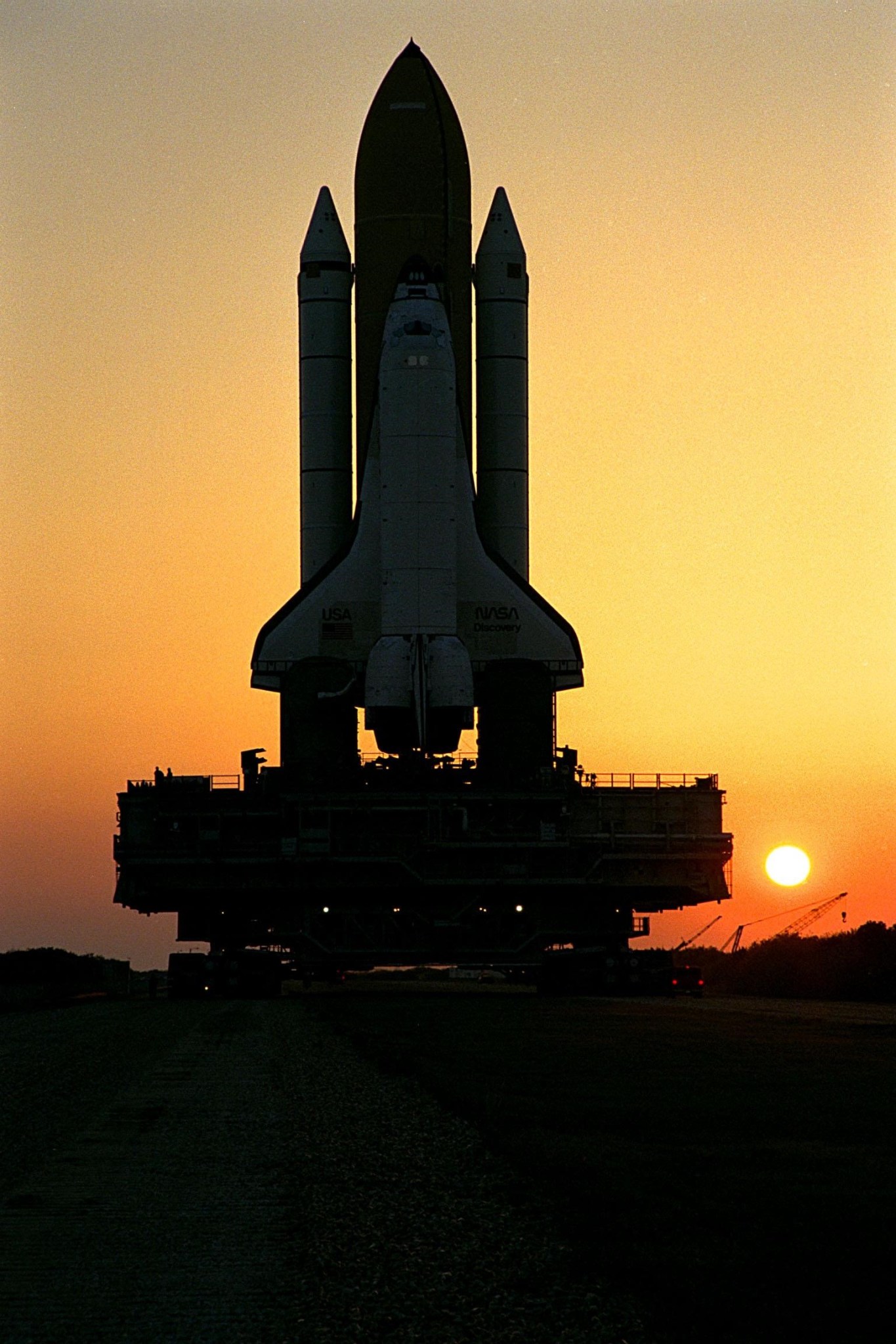
This week in 1998, space shuttle Discovery and STS-91 launched from NASA’s Kennedy Space Center on the ninth and final Shuttle-Mir docking mission. Between March 1995 and May 1998, NASA and Russian scientists conducted experiments on the Russian space station designed to answer vital questions about how humans function in space and how to build future space stations. Today, the Payload Operations Integration Center at NASA’s Marshall Space Flight Center serves as “science central” for the International Space Station, working 24/7, 365 days a year in support of the orbiting laboratory’s scientific experiments. The NASA History Program is responsible for generating, disseminating, and preserving NASA’s remarkable history and providing a comprehensive understanding of the institutional, cultural, social, political, economic, technological, and scientific aspects of NASA’s activities in aeronautics and space. For more pictures like this one and to connect to NASA’s history, visit the Marshall History Program’s webpage. (NASA)



























